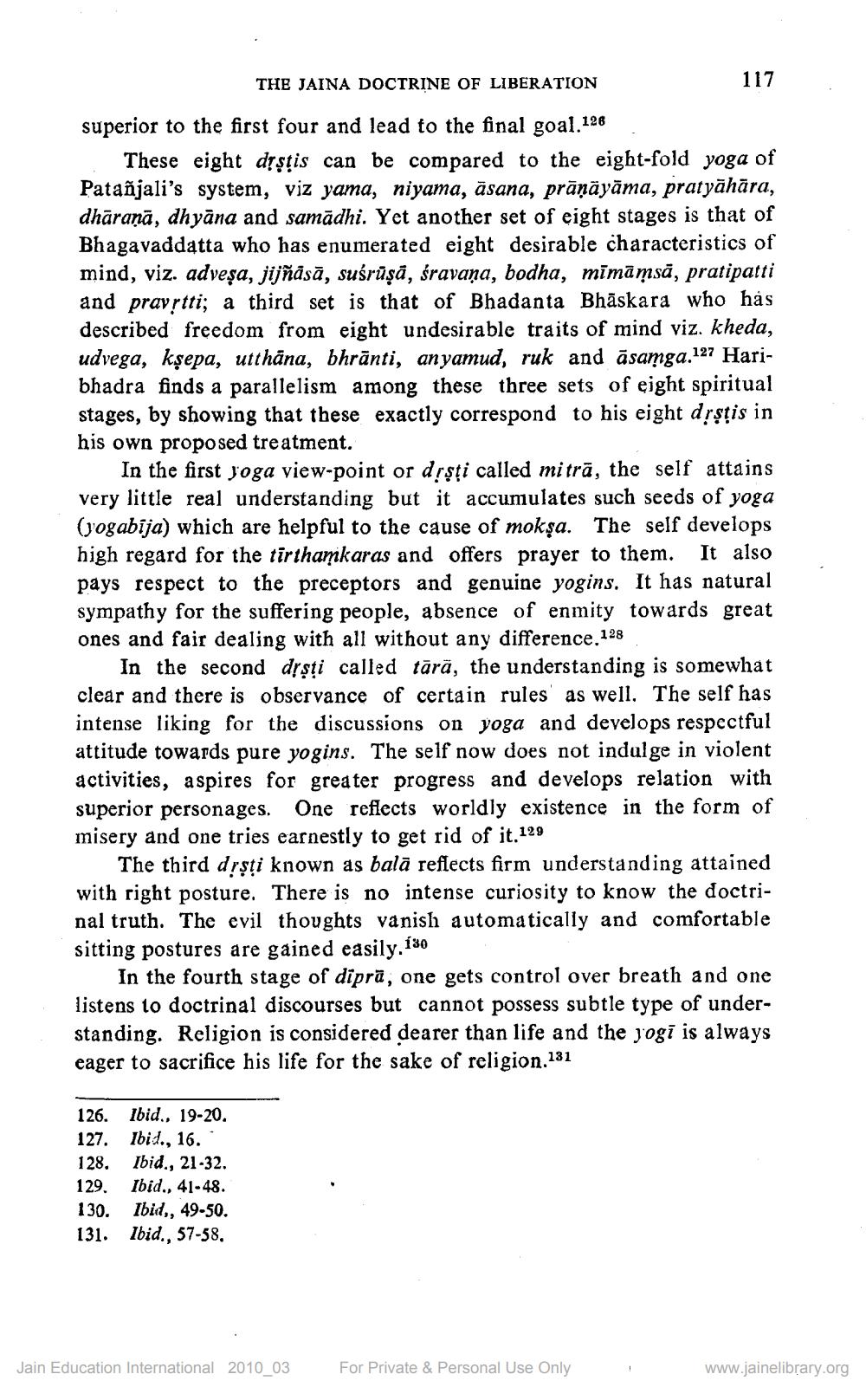________________
THE JAINA DOCTRINE OF LIBERATION
117
superior to the first four and lead to the final goal.128
These eight dịştis can be compared to the eight-fold yoga of Patañjali's system, viz yama, niyama, āsana, prāņāyāma, pratyāhāra, dhāraņā, dhyāna and samādhi. Yet another set of eight stages is that of Bhagavaddatta who has enumerated eight desirable characteristics of mind, viz. adveșa, jijñāsā, suśrüşā, śravaņa, bodha, mīmāmsā, pratipatti and pravstti; a third set is that of Bhadanta Bhāskara who has described freedom from eight undesirable traits of mind viz. kheda, udvega, kşepa, utthāna, bhrānti, anyamud, ruk and āsamga.127 Haribhadra finds a parallelism among these three sets of eight spiritual stages, by showing that these exactly correspond to his eight drstis in his own proposed treatment.
In the first yoga view-point or drșți called mitrā, the self attains very little real understanding but it accumulates such seeds of yoga (yogabija) which are helpful to the cause of mokşa. The self develops high regard for the tirthamkaras and offers prayer to them. It also pays respect to the preceptors and genuine yogins. It has natural sympathy for the suffering people, absence of enmity towards great ones and fair dealing with all without any difference. 128
In the second dr sti called tārā, the understanding is somewhat clear and there is observance of certain rules as well. The self has intense liking for the discussions on yoga and develops respectful attitude towards pure yogins. The self now does not indulge in violent activities, aspires for greater progress and develops relation with superior personages. One reflects worldly existence in the form of misery and one tries earnestly to get rid of it.129
The third drsti known as balā reflects firm understanding attained with right posture. There is no intense curiosity to know the doctrinal truth. The evil thoughts vanish automatically and comfortable sitting postures are gained easily. i30
In the fourth stage of diprā, one gets control over breath and one listens to doctrinal discourses but cannot possess subtle type of understanding. Religion is considered dearer than life and the yogi is always eager to sacrifice his life for the sake of religion.181
126. 127. 128. 129. 130. 131.
Ibid., 19-20. Ibid., 16. Ibid., 21-32. Ibid., 41-48. Ibid,, 49-50. Ibid., 57-58.
Jain Education International 2010_03
For Private & Personal Use Only
www.jainelibrary.org




